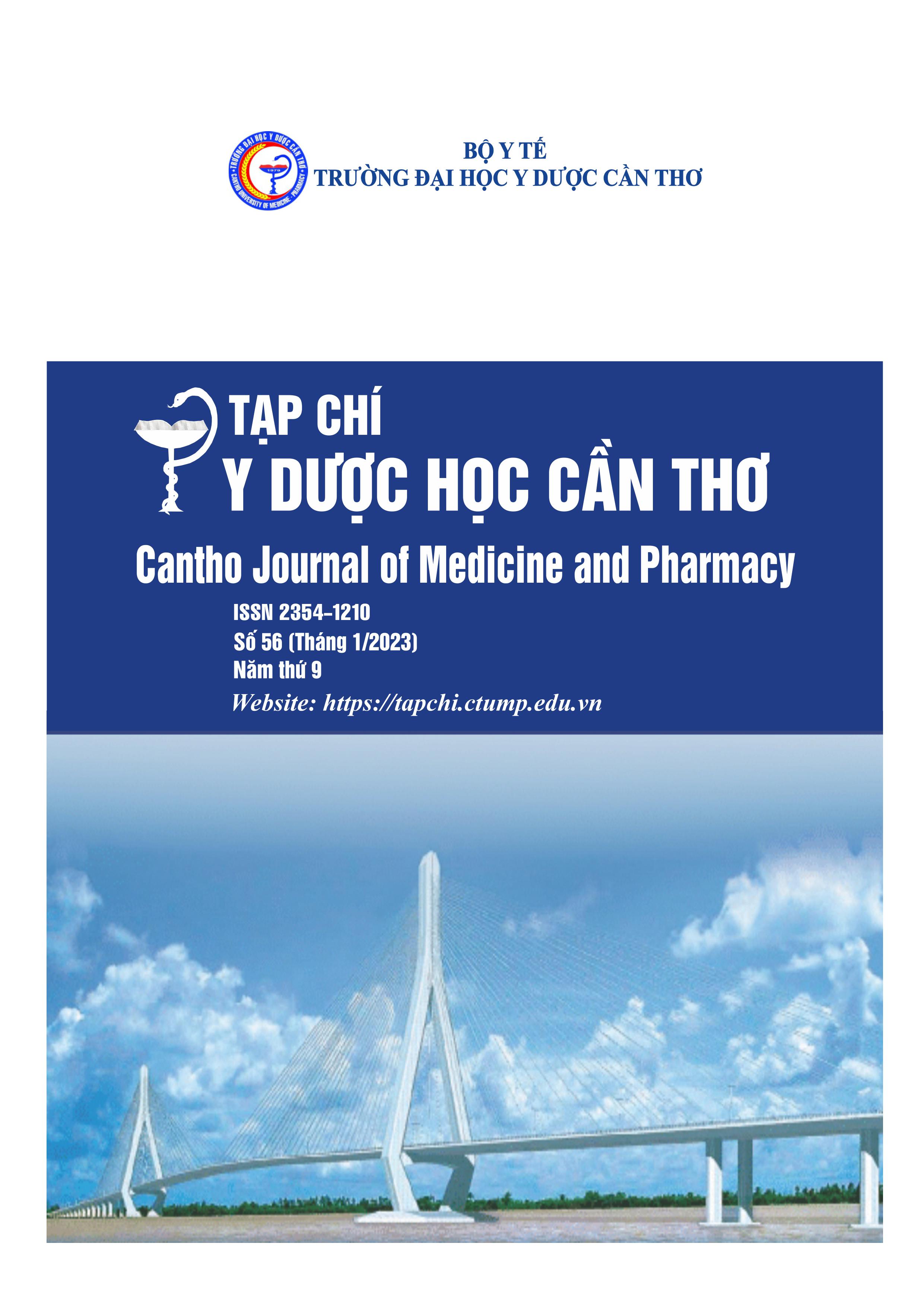COMPARISON BETWEEN QUICK COVID-19 SEVERITY INDEX (qCSI) AND CRB-65 SCORES FOR CRITICAL RESPIRATORY ILLNESS PROGNOSTICATION IN PATIENTS WITH COVID-19
Main Article Content
Abstract
Background: Corona virus disease 2019 (COVID-19) has diverse clinical manifestations, from asymptomatic infection to severe symptoms such as acute respiratory failure, severe pneumonia, multi-organ dysfunction and death. An early prognostic tool for the progression of severe respiratory failure in these COVID-19 patients can optimize treatment stratification and determine appropriate care planning, especially at the local health centers. Objectives: Compare the prognostic value of critical respiratory illness 24 hours from admission of qCSI and CRB-65 scores in COVID-19 patients. Materials and methods: A descriptive cross-sectional study on 220 COVID-19 patients from December 2021 to April 2022 at the COVID-19 treatment center in Tinh Bien district, An Giang province. Results: The qCSI score had a very good predictive value for critical respiratory illness after 24 hours with an area under the curve (AUC) of 0.958 (p<0.0001). The qCSI optimal cut-off point was at 8 with a sensitivity of 100% and a specificity of 85.5%. The CRB-65 score had a average value in predicting critical respiratory illnes after 24 hours with an AUC of 0.779 (p<0.0001). The optimal cut-off point of the CRB65 scale was at 1 with a sensitivity of 75% and a specificity of 73.9%. Conclusion: The qCSI score has a better prognostic value for critical respiratory illness 24 hours from admission than the CRB65 score.
Article Details
Keywords
COVID-19, CRB-65, qCSI, prognosis, critical respiratory illness
References
2. Lại Văn Nông, Võ Phạm Minh Thư (2021), Sổ tay quản lí và điều trị COVID-19, trường Đại học Y Dược Cần Thơ, tr. 9.
3. Capelastegui, A & España, Pedro & Quintana, et al. (2006), Validation of a predictive rule for the management of community-acquired pneumonia. The European respiratory journal: official journal of the European Society for Clinical Respiratory Physiology, 27, pp. 151-157.
4. Carriel J, /Munoz-Jaramillo ˜ R, Bolanos-Ladinez ˜ O, et al. (2020), CURB-65 as a predictor of 30-day mortality in patients hospitalized with COVID-19 in Ecuador: COVID-EC study, Revista clinica espanola, vol. 222(1), pp. 37-41.
5. Centers for Disease Control and Prevention, (2020), Previous U.S. COVID-19 case data: updated August 27, 2020. [ONLINE] Available at: https://stacks.cdc.gov/view/cdc/92675.
6. Guillermo Rodriguez-Nava, Maria Adriana Yanez-Bello, Daniela Patricia Trelles-Garcia, et al. (2021), Performance of the quick COVID-19 severity index and the Brescia-COVID respiratory severity scale in hospitalized patients with COVID-19 in a community hospital setting, International Journal of Infectious Diseases, Volume 102, 2021, pp. 571-576.
7. Haimovich, Adrian D, et al. (2020), Development and Validation of the Quick COVID-19 Severity Index: A Prognostic Tool for Early Clinical Decompensation, Annals of emergency medicine vol. 76,4, pp. 442-453.
8. Lim WS, van der Eerden MM, Laing R, et al. (2003), Defining community acquired pneumonia severity on presentation to hospital: an international derivation and validation study, Thorax, 58 (5), pp. 377–82.
9. Pepe MS (2004), The statistical evaluation of medical tests for classification and prediction, Oxford University Press, pp. 146.
10. Satici, Celal, et al. (2020), Performance of pneumonia severity index and CURB-65 in predicting 30-day mortality in patients with COVID-19. International journal of infectious diseases: IJID: official publication of the International Society for Infectious Diseases, vol. 98, pp. 84-89.


